








The magazine of the photo-essay

Oct back 2016 issue



“A free, really high quality photo-essay magazine. Fabulous!”
Stephen Fry. British actor, writer and film & documentary maker
by Giorgio Taraschi
China’s race for hydroelectric power has been going on for over 20 years leading to development plans and to the
construction of a 28 dam cascade in the Lancang river. However, in recent years, its enthusiasm for dam building has
spilled over into south-east Asia. Hydrolancang - a Chinese state-owned enterprise responsible for no less than 7 dams
in the upper Mekong - began in 2013 the construction of its very first overseas hydropower project, the Lower Sesan II
dam in northern Cambodia. The $800 million and 400MW project, located less than a hundred kilometers south from
the Don Sahong dam in Laos, has been among the most controversial and destructive ones to be developed in recent
years. Once completed, it will block the Sesan and Srepok rivers - two of the main tributaries of the Mekong - creating
a 36.000-hectares reservoir, flooding several villages and displacing thousands of people who have been living along
the river banks for generations, relying on it for survival. The potential impacts, both good and bad, are enormous.
Cambodia, with its population 60% under the age of 30, is growing fast and some estimates suggest that the dam
could potentially generate a fifth of the power the country is likely to need by 2018; yet, its physical impacts could
threaten the food security for tens of thousands of people.
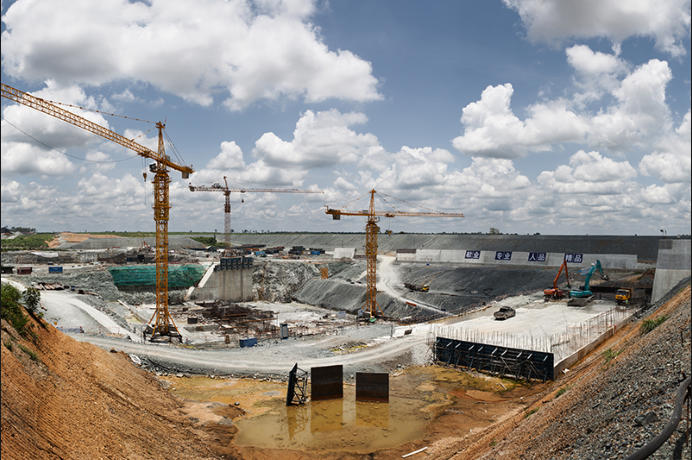
View of the Lower Sesan 2 dam building site, located at the confluence of the Sesan and Srepok rivers, two of the main
tributaries of the Mekong in Stung Treng, northern Cambodia. The $800 million and 400MW hydropower dam has been
among the most controversial and destructive projects carried out by a chinese company in recent years. Once
completed, it will create a 36.000-hectares reservoir, displacing thousands of people with an environmental impact that
will be felt up to the river's delta in Vietnam.
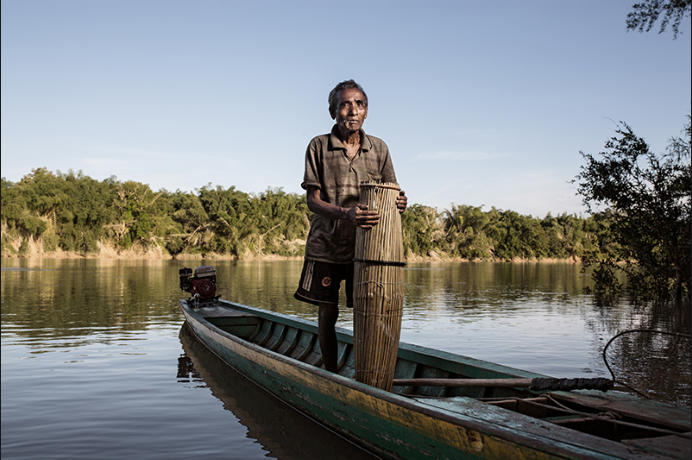
An old fisherman from Kbal Romeas holding one of his hand-made bamboo fish traps he would normally sell. His
house, along with many others, will soon be under water once the dam is completed. "I know I have no choice but my
spirit is here; I was born here from a family of fishermen and that's what I've always done. What am I going to do in the
new place withouth my river?"
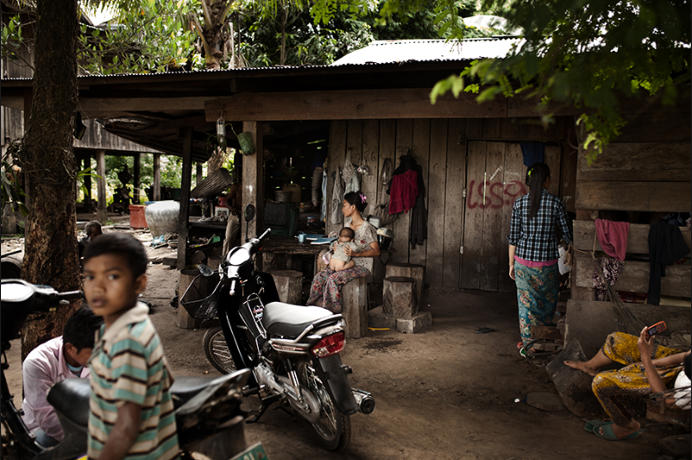
Daily life in Srae Sronok, one of the villages that will be flooded by the reservoir of the $800 million Lower Sesan 2
dam. All the houses in the village have been spray-painted in red with the LSS2 sign, meaning the owners will soon be
forced to relocate. Stung Treng, northern Cambodia.
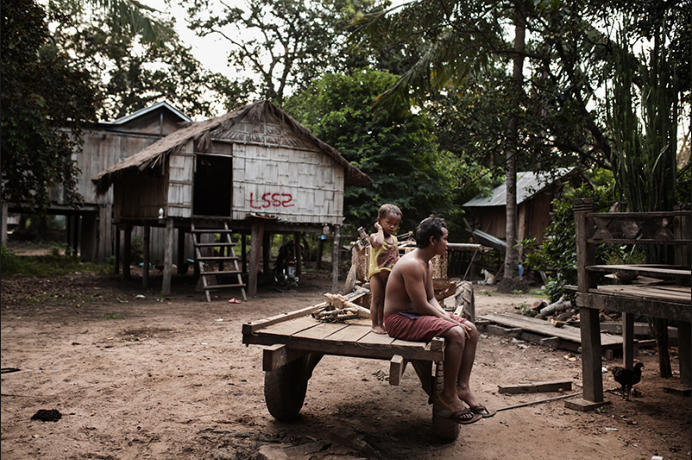
Father and son on a wooden cart outside their home in Kbal Romeas. Their house, like many others, has been spray-
painted in red with the sign LSS2 (Lower Sesan 2) meaning they have to be relocated into the designated area, a
scorching dusty piece of land along the main road to Ratanakiri province, northern Cambodia.
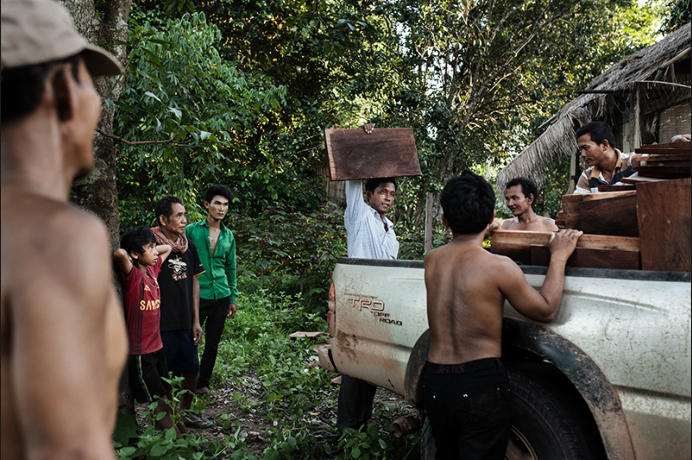
Workers from the relocation site arrive in the village of Kbal Romeas to collect teak wood from abandoned houses.
Having no choice but to move away or drown, 89 out of 139 familes from Kbal Romeas agreed to be relocated to a
scorching dusty piece of land along the main road to Ratanakiri. The villagers were offered two options: either accept
$6000 per family and re-build a house by themselves or move into a small concrete house with a tin roof with 5
hectares of land to farm. Like many other promises though, no official document has been yet provided.
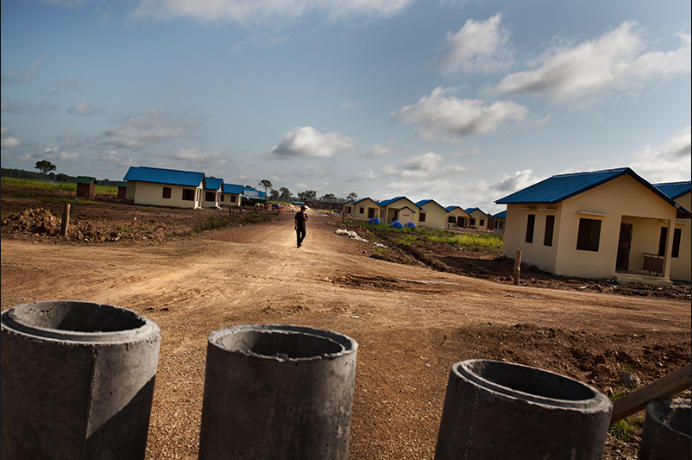
A security guard walks among the houses at the relocation site. The dry land conditions and the complete lack of trees
will make it very hard for villagers to resettle.
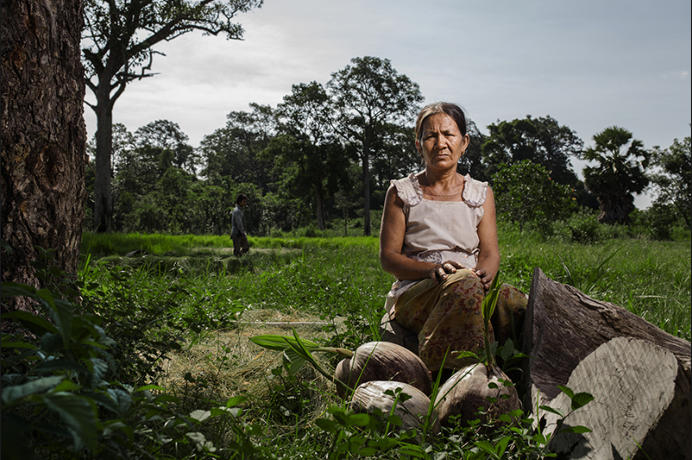
Mae Ton, 64, outside the sacred forest of Kot Bou along the Srepok river. Like many other villagers from Kbal Romeas,
she belongs to the Phnong ethnic group, animists who believe their guardian spirits reside in the sacred forest, burial
ground of their ancestors. The whole forest, along with her house, will be flooded by the dam's reservoir. "The company
never warned us about the project. We weren't offered any benefit like the people in the village. Here I have my fruit
trees, my cows (...) but above all here I have buried my ancestors. I'm not moving anywhere until the water rises up to
my knees".
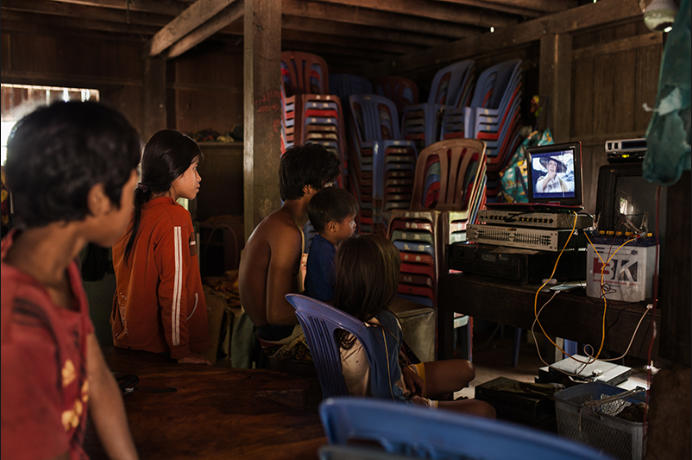
Children watch a movie on a laptop powered by a car battery. Most of Cambodians lack electricity and car batteries,
which are charged once a week by a fuel-powered machine, are commonly used to power up small electronic devices
or light bulbs. Most of the hydroelectric projects planned along the Mekong river seem to be necessary for the power
demand from the rising metropolis around south-east asia. The LSS2 dam could potentially generate a fifth of the
power Cambodia is likely to need by 2018 but the effects on the environment are devastating. Kbal Romeas, Stung
Treng, northern Cambodia.
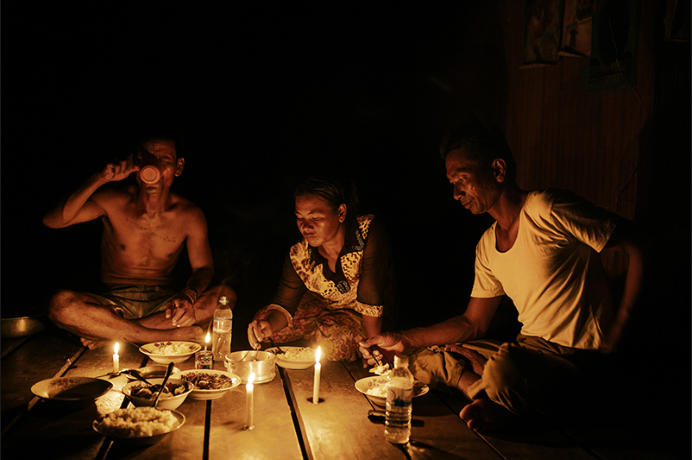
A family sharing dinner by candlelight in Kbal Romeas, one of the villages that will be flooded by the dam's reservoir.
Far from cities and towns, most Cambodians lack electricity. "They say we're gonna have electricity in the new
relocation site but, like many other promises they made, it's just a rumor and no one has ever showed up with an
official document to prove it. All we know about the flooding and relocation is just by word of mouth" - says Keo Meap,
community leader of Kbal Romeas, Cambodia.

Snow Town, a brand new attraction inside one of the hundreds of shopping malls in Thailand. The hunger for electricity
in cities like Bangkok is driving dam construction throughout the lower Mekong basin in Cambodia and Laos with an
environmental impact that can be felt up to the river's delta in Vietnam.
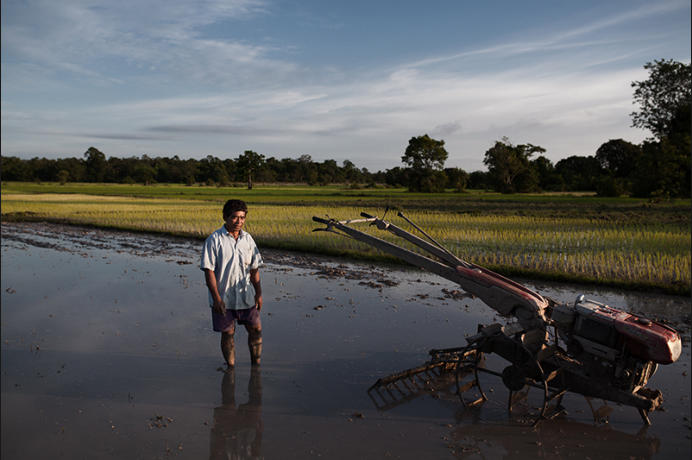
A farmer working in his rice field at sunrise in Srae Sronok, one of the villages along the Srepok river that will be
flooded by the dam's reservoir.
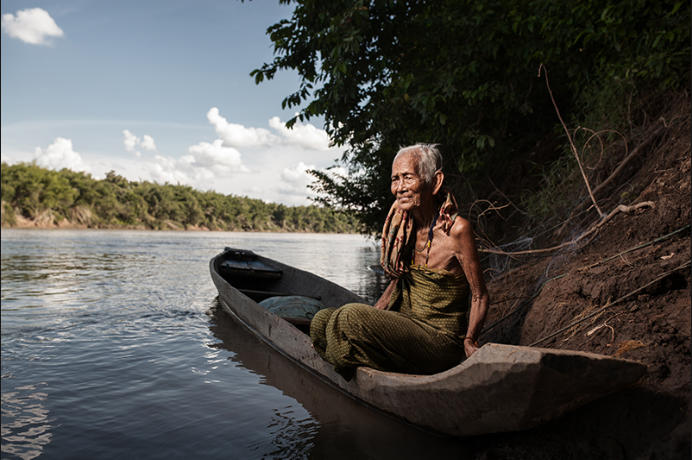
An old woman from Kbal Romeas sitting on a typical wooden canoe in the Srekor river, one of the main tributaries of
the Mekong in Stung Treng, northern Cambodia. Most of the people left the village already and the boats are rarely
used for fishing; instead old people use them to hang on to while bathing in the river.
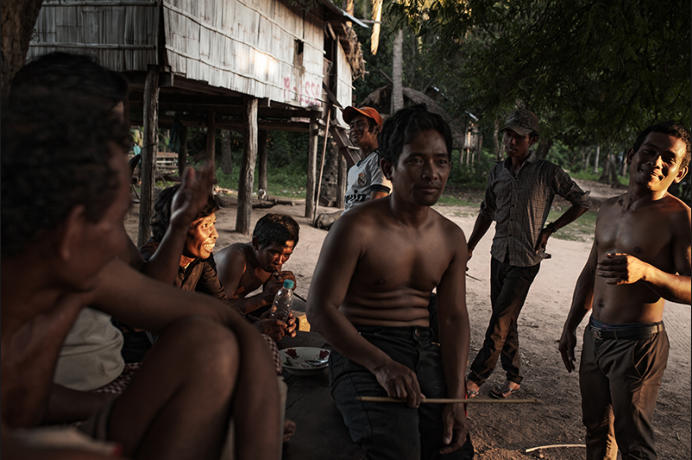
Boys from Kbal Romeas gather at sunset to enjoy some home-made rice wine, a highly alcoholic drink young villagers
brew and sell. In the background, one of the many houses that have been sprayed in red paint with the writing LSS2 by
the company carrying out the relocation project.
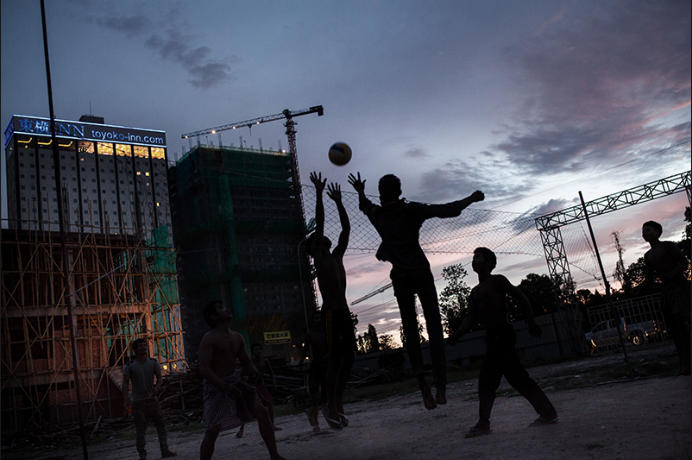
Teenegars playing volleyball at sunset inside one of the many construction yards of Diamond Island, the brand new
commercial and residential area in Phnom Penh, Cambodia. The LSS2 dam could potentially generate a fifth of the
power Cambodia is likely to need by 2018 but the effects on the environment are devastating.
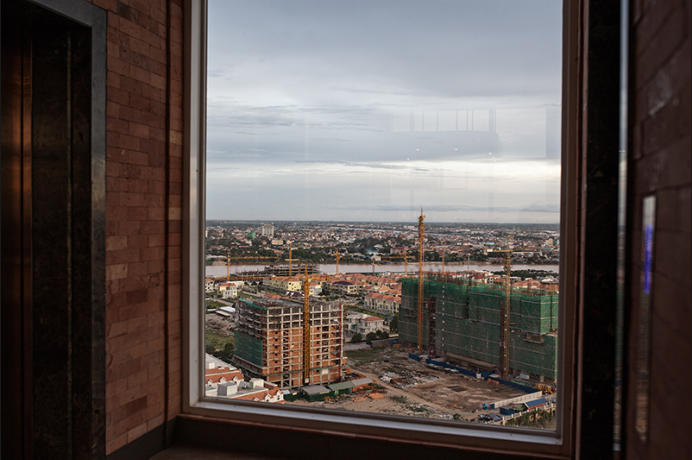
View of Diamond Island from the window of a brand new japanese hotel in Phnom Penh. Most of the hydroelectric
projects planned along the Mekong river seem to be necessary for the power demand from the rising metropolis
around south-east asia.
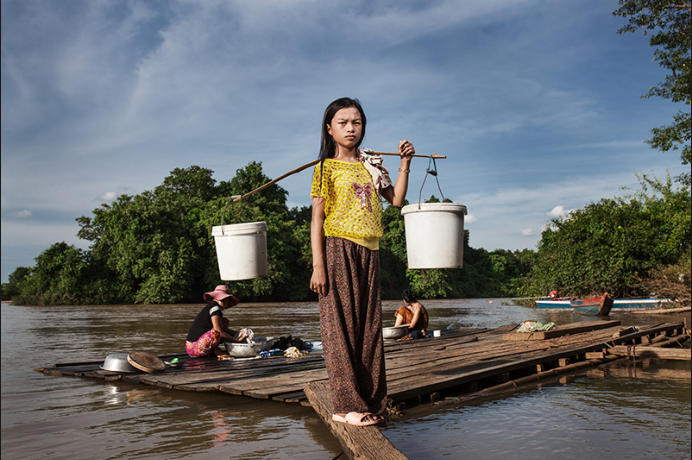
A young girl heads back home after filling buckets with river water for daily use. Despite hosting only 12 families, the
village of Phluk, located 11km downstream the dam's construction site, was once famous for its fishing community.
Local fishermen used to earn between $15 and $25 per day selling fish to the surrounding communities. Now because
of the dam and the calcium carbide they use for drilling, the amount of fish in the area has dropped dramatically. "The
village is now very quiet and we no longer sell fish since there's barely enough to feed ourselves. We only have
buffaloes and chickens but with the deforestation going on around here it's getting harder and harder. As if this wasn't
enough, the rain stopped too. We are cursed" - Bun Aeng, 50, fisherman.







